Are you planning a trip to the Bahamas and worried about shark attacks? You’re not alone. In recent years, the number of reported shark attacks in the region has been steadily rising, leaving many wondering what is causing this increase.
Research says the most probable reason is the mistaken identity of a human or a surfboard for their natural prey. Sharks may also be attracted to areas where people are in the water due to the presence of food, such as fish that people have caught and released back into the ocean.
In this blog post, we’ll explore what might be behind the uptick in shark attack incidents and offer tips on staying safe while swimming or snorkeling in Bahamian waters. So read on for all you need to know about sharks and safety in The Bahamas.
Are There Sharks in The Bahamas?
Yes, In the Bahamas, there are a variety of sharks that can be found inhabiting the waters, including great hammerhead sharks, tiger sharks, bull sharks, lemon sharks, Caribbean reef sharks, oceanic white tip sharks, and nurse sharks.
Great hammerhead sharks
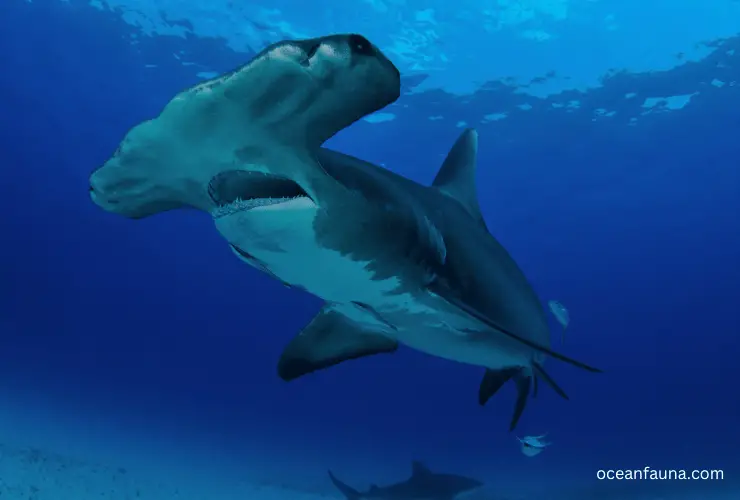
Great hammerhead sharks are one of the most commonly sighted species in the area, where they feed on rays, small fishes, and invertebrates. They have a wide distribution throughout temperate and tropical waters of the world’s oceans and are often spotted around reefs in shallow water.
In addition to great hammerheads, there are also scalloped hammerhead sharks which can be found in shallower water near reefs but tend to prefer more open water as well.
Tiger sharks

Tiger Sharks are another common species that can be seen offshore from the Bahamas. These apex predators typically inhabit warmer coastal waters but have been known to venture further out into offshore areas.
They feed on a variety of marine life, such as fish, crustaceans, mollusks, sea turtles, and sometimes even larger prey like dolphins or smaller whales.
Bull sharks
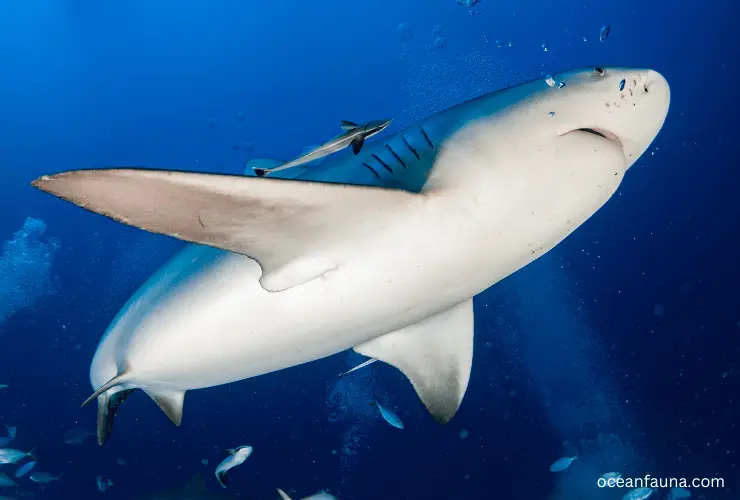
Bull Sharks are also frequently seen in Bahamian waters, although they tend to stay closer inshore than some other species, such as tiger sharks and great hammerhead sharks.
Also Read: Are There Sharks in Maldives?
Bull Sharks prefer brackish estuaries or river mouths but will also visit shallow coral reefs if food is plentiful enough. They primarily feed on other fish, although scavenging is unheard of.
Lemon sharks
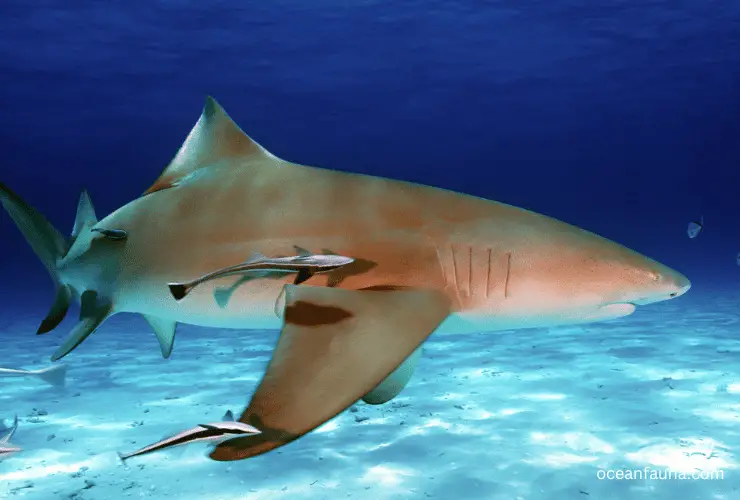
Lemon Sharks live in a lot of the same places as bull sharks, but they like coral reefs and seagrass beds that are a little deeper. Their favorite foods are bony fish and cephalopods. Caribbean Reef Sharks also live in these areas.
They hunt for small fish with bones close to coral reefs at night. During the day, they rest in deeper water along walls or rock ledges.
Oceanic white tip sharks
Oceanic White Tip Sharks can sometimes be seen patrolling offshore pelagic waters beyond the fringing reefs and islands that make up most of The Bahamas archipelago. Juveniles are more likely to be seen than adults because they like warm shallow waters with lots of food, like schools of tuna or barracuda.
Silky sharks
Silky Sharks can go to the deeper offshore waters, but they usually stay closer to shore around drop-offs, where they feed on schooling fish like tuna or mackerel.
Nurse sharks
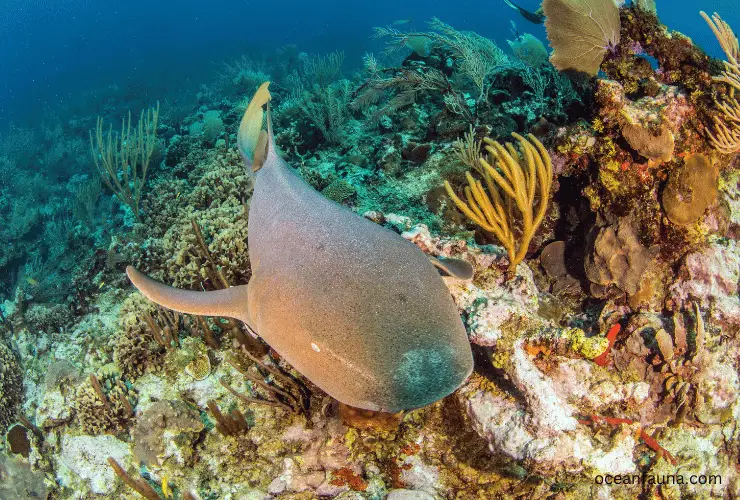
Nurse Sharks tend to stay in shallower depths near mangroves or sandy flats, where they get mollusks from the sediment at night and rest during the day under ledges or cracks in sheltered bays.
Are There Shark Attacks in The Bahamas?
Yes, there are shark attacks in the Bahamas. According to shark attack data compiled by the International Shark Attack File (ISAF), most of the shark attacks occurred in the Bahamas.
Although this number may seem quite high, over one million people visit the Bahamas annually and spend time in the ocean. This figure is relatively low compared to the millions of people who use its waters for fishing, swimming, and other activities.
Most of these attacks have occurred in the shallow coastal waters of New Providence and Grand Bahama islands, where many tourists congregate. It is important to take safety precautions if you plan on swimming or snorkeling in these areas.
These include avoiding swimming alone or at night and avoiding areas where large schools of fish are present, as they can attract sharks.
Why Are There So Many Shark Attacks in The Bahamas?
Numerous factors have contributed to the high rate of shark attacks in the Bahamas. In this article, we will explore these reasons in detail and explain why they make the waters of the Bahamas especially prone to shark attacks.
Mistaken Identity
The main reason why shark attacks occur in the Bahamas is because of mistaken identity. Since sharks are top predators and evolved to detect their prey by movement, they may mistake a human or surfboard for their natural prey.
Sharks can also be attracted to areas with people due to the presence of food, such as fish that have been released back into the water.
Location
Another significant factor influencing the high rate of shark attacks in The Bahamas is its location. The country is located within an area known as the Tropical Western Atlantic, which is home to many sharks.
Additionally, its proximity to the Gulf Stream – a warm ocean current that carries food resources for sharks – attracts them even further. This means that there is an abundant population of predatory sharks in the waters surrounding the islands, increasing their likelihood of interactions with humans.
Water Conditions
In addition to location, certain water conditions also increase the possibility of a shark attack occurring in The Bahamas. Water clarity can influence how easily a person can see a nearby shark and therefore anticipate an attack.
Shallow waters around coral reefs mean that people tend to be closer to sharks than elsewhere, and higher salinity levels can attract some species of marine predators. All of these factors put swimmers in The Bahamas at greater risk than they would be otherwise.
Tourism
Tourism has become increasingly popular in The Bahamas over recent decades, meaning more people spend time in its waters each year.
As well as bringing increased chances of encountering predators such as sharks, it has also led to changes in local fishing practices such as catch-and-release tournaments, which may lead to increased aggression from marine life towards humans due to increased interaction with anglers’ equipment and baitfish being thrown overboard near swimming areas.
Human Behaviour
Don’t overlook human behavior when considering shark attacks reported in The Bahamas each year. People must remember that they are entering a wild environment where large predators live and take precautions accordingly.
Environmental Changes
Finally, environmental changes are thought to be contributing to The Bahamas’ high occurrence of shark attacks. Plastic garbage in the ocean can attract sharks and other predators, and global warming has caused a rise in water temperature, which could affect their behavior.
Climate change is also causing an increase in storm frequency and intensity, potentially affecting shark migration patterns and increasing the chances of a person entering their territory during a storm.
How Many Shark Attacks Have Occurred in The Bahamas?
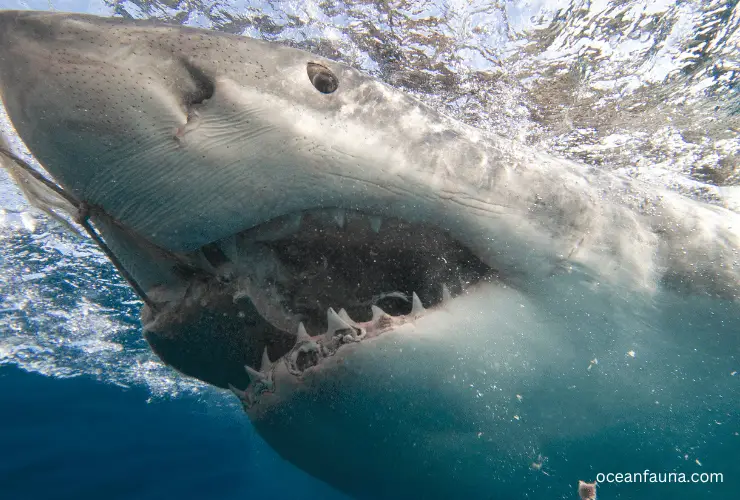
According to statistics from the Florida-based International Shark Attack File, there have been a total of 32 reported shark attacks in the Bahamas since 1749.
However, according to another source, the Sharks Attack Database, there have been 74 shark attacks reported in the Bahamas through 2016, indicating that the number of shark attacks is on the rise. This increase has been attributed to an increased human presence in coastal waters due to tourism and recreation activities.
Additionally, it has been suggested that warmer ocean temperatures due to climate change may increase the number of sharks found near shorelines.
Therefore, while 32 shark attacks have been reported historically since 1749, that number is likely much higher given how much more accessible, and populated coastal areas are now compared to centuries ago.
What Seasons Do Sharks Attack Most in The Bahamas?
Shark attacks in the Bahamas occur most frequently during the summer months of June, July, and August. This coincides with a peak in tourism to the area and increased activity in the waters off the Bahamas coast.
Sharks are naturally curious animals attracted to areas with lots of activity and plenty of food, which is why shark attacks tend to increase during this period.
Another contributing factor to increased shark attacks in the Bahamas during these months is that they coincide with when female sharks migrate to warmer waters to spawn their young. Female sharks often travel alone or with small groups, making them more vulnerable to attack by larger sharks. Additionally, shallow coastal areas warm up quickly during these months due to increased sun exposure, making them a popular destination for many species of sharks.
Lastly, shark attacks in the Bahamas can also be linked to oceanic temperature changes during the summer. Warmer water temperatures encourage an increase in prey items such as fish and squid, which then attract sharks from further away looking for food.
Precaution of Shark Attacks in The Bahamas
The Bahamas is a popular destination for scuba diving, snorkeling, and other aquatic activities. It is also home to several species of sharks, some considered potentially dangerous. Despite the potential danger of shark attacks, visitors can still enjoy the beauty and biodiversity of the ocean without fear by taking sensible precautions.
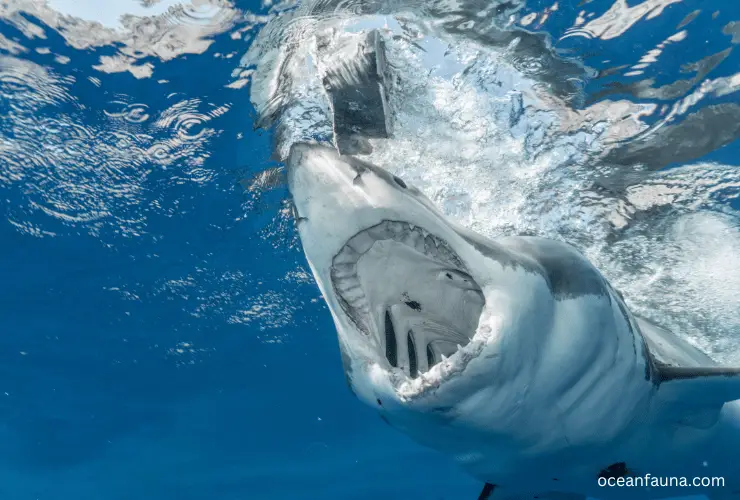
First, be aware of the area’s most common types of sharks. The Caribbean Reef Shark, Bull Shark, Great Hammerhead Shark, Tiger Shark, and Nurse Shark are among some found in Bahamian waters. Knowing which species may pose a threat can help divers to make informed decisions about their safety while underwater.
Second, divers should take appropriate measures when entering the water. These include the following-
- Avoiding swimming alone.
- Wearing brightly colored gear or wetsuits to blend in with natural surroundings.
- Being mindful of one’s movements and not flailing too much.
- Staying on sandy or rocky bottoms instead of open areas. Paying close attention to any unusual behavior from the marine life around them.
Additionally, divers should only go out during daylight hours and try not to splash too much while swimming.
Third, divers should be aware that certain environmental conditions may make an area more prone to shark activity. These include-
- Warmer waters during summer months.
- Areas near reefs where marine life congregates.
- Areas near rivers or channels where fish migrate through.
- And any area where fishing has taken place recently.
When possible, it is best to avoid these places altogether or at least keep a safe distance from them if they cannot be completely avoided.
Finally, divers need to remain calm if they encounter a shark during their dive and never provoke it in any way. Divers should back away slowly with minimal movement until they are out of harm’s reach. If attacked by a shark, punching it in its gills or eyes may provide enough distraction for the diver to escape safely.
Conclusion
Now you have a compact knowledge of why there are so many shark attacks occurring in the Bahamas and how you can have safe diving in the water of this shark-infested region.
Follow all the guidelines and respect others’ space!

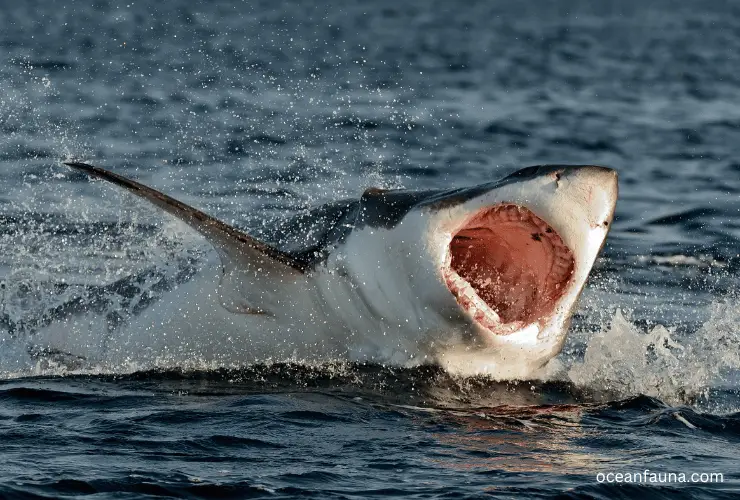
5 thoughts on “What Caused Shark Attack in Bahamas?”